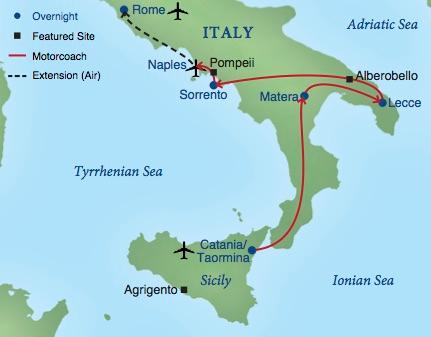
Alberobello--is this the land that time forgot? Like Matera--and many Italian cities--if you're in the right place you feel like you've been time-warped into the Middle Ages.
Leaving the region of Basilicata and heading for Puglia (aka Apulia, the heel of the boot), we drove directly from Matera to Alberobello on our way to Lecce, where we would stay for four nights. (Not quite as shown on the above map).
As we approached Alberobello on the bus, we began to see the first trulli, the conical dwellings (unique to this part of Italy) for which the city is famous. Many theories suggest several possible origins for the cupola-like trullo, but I favor the one that dates its influence all the way back to the ancient Greeks. Apparently there were similar structures in Mycenea, Greece, and the proximity of the Puglian east coast to Greece makes it probable that Greeks were in Puglia thousands of years ago, even though colonization wouldn't occur until the eighth century BCE, after which Apulia became part of Magna Graecia.(NatGeo Traveler). The oldest of the trulli in Alberobello are from the 14th century.
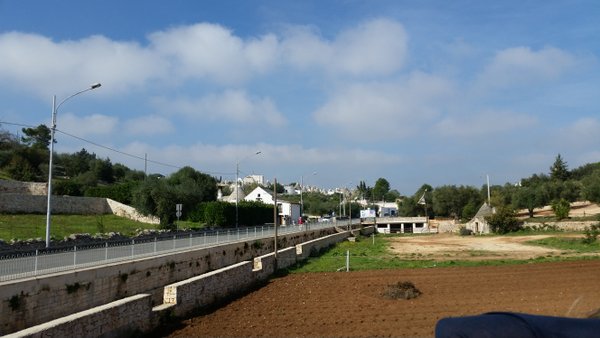
There are some 1500 trulli in and around Alberobello; about 400 in the town itself. We took a walking tour of the town along cobblestone alleys lined with the trulli, some of which are private residences, others artisan workshops.
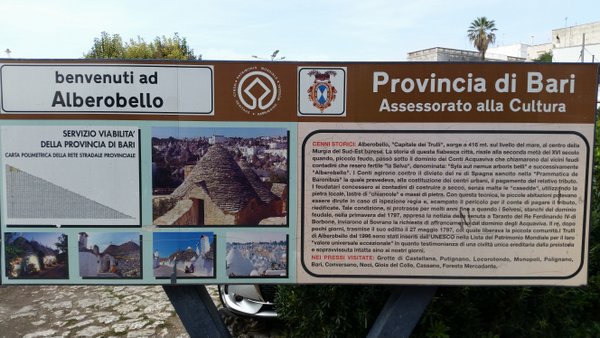
Most trulli are whitewashed, and most are topped with a cross or other stone marker (like a ball, star, or cone) called a pinnacolo, which is unique to the individual builder of the structure.
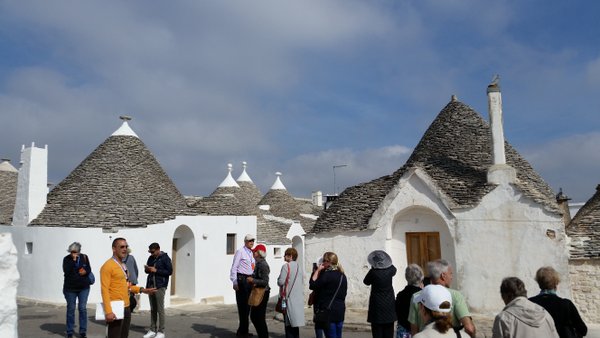
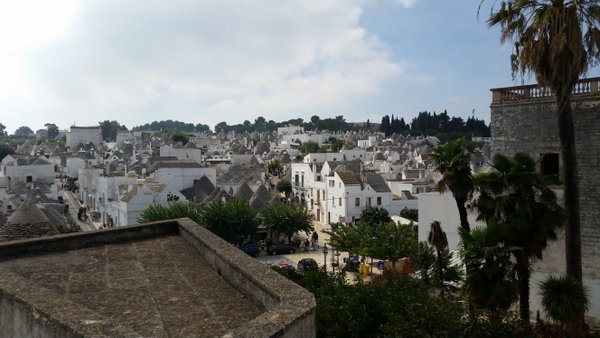
Some of the roofs featured painted symbols of arcane significance ("primitivi," "cristiani" or "magici").
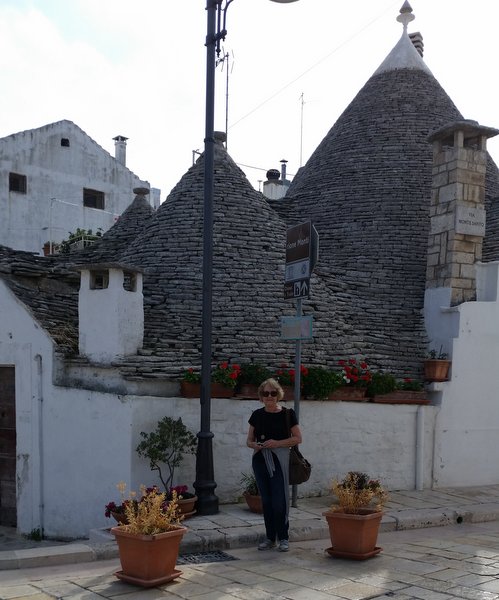
Before leaving Alberobello, we ate lunch at one of my favorite restaurants on the tour--La Poeta Contadina (the peasant poet). I loved that indoor tree!